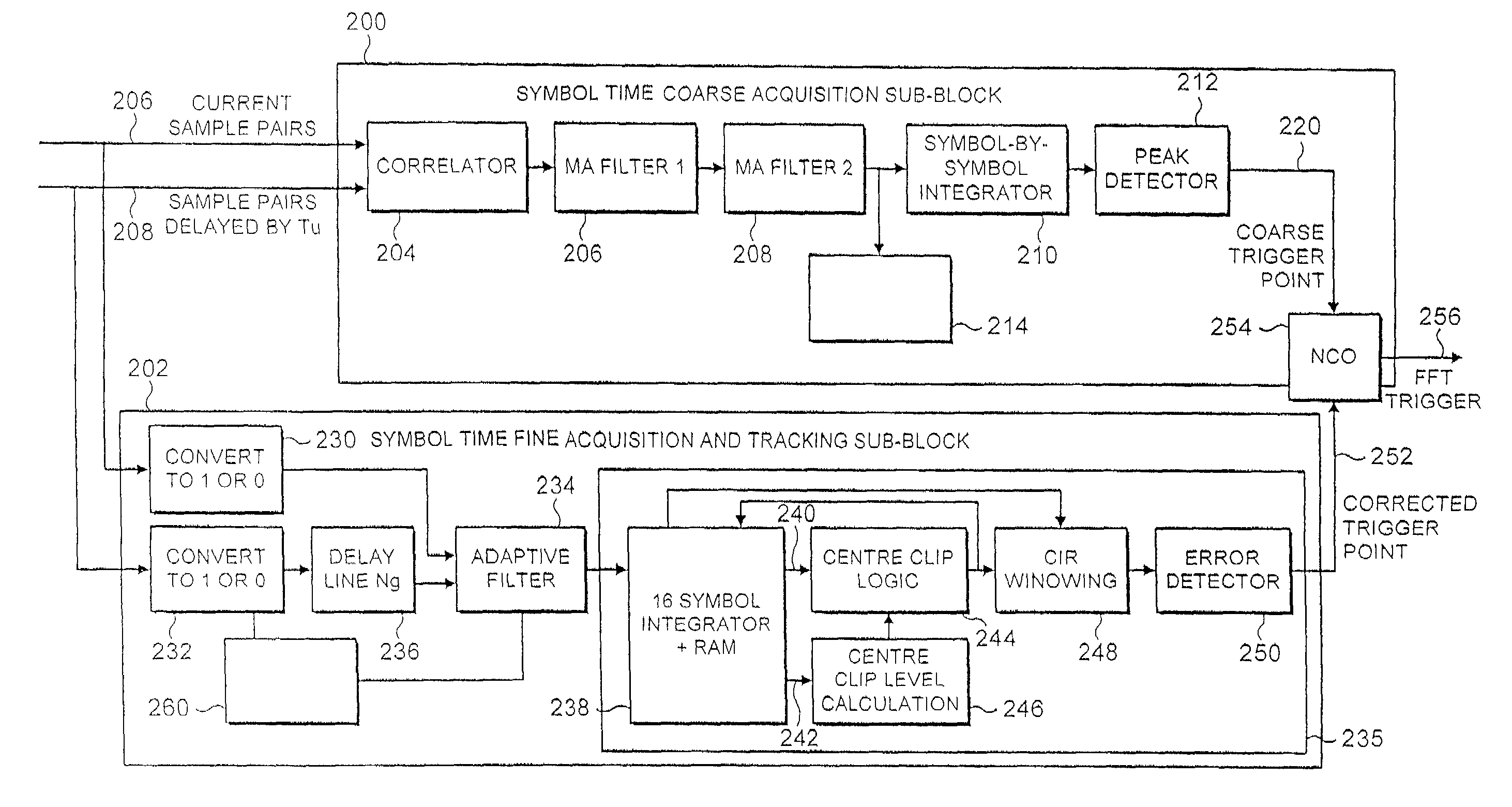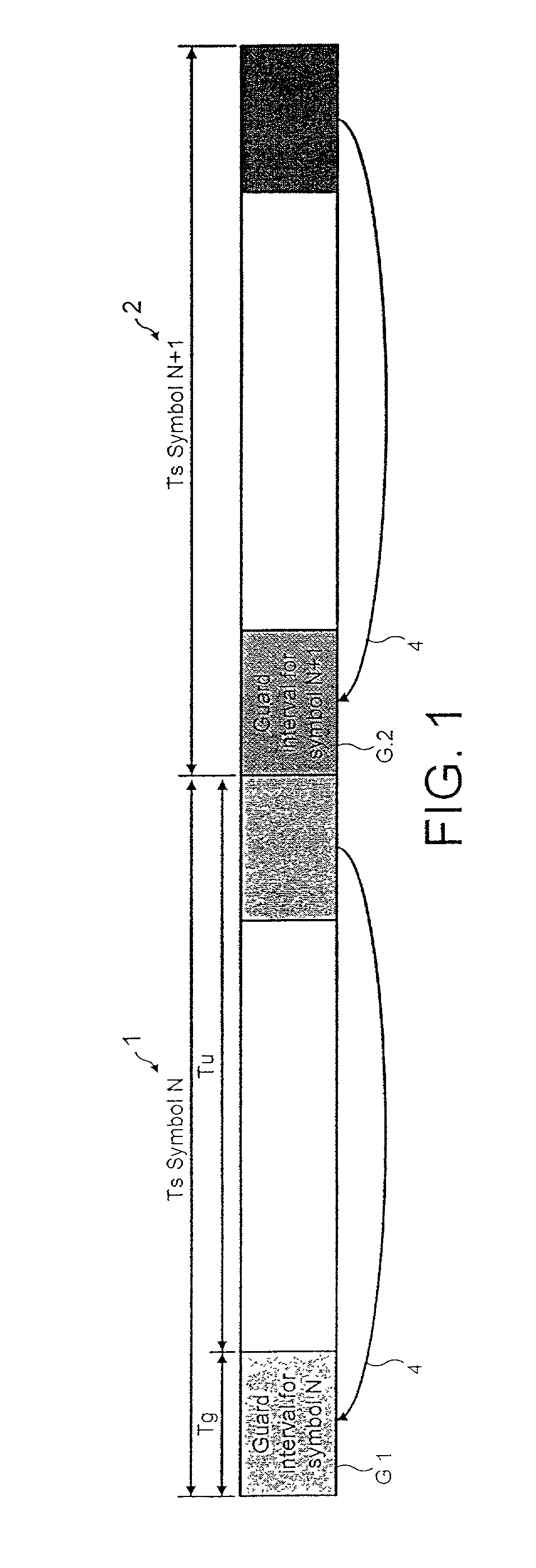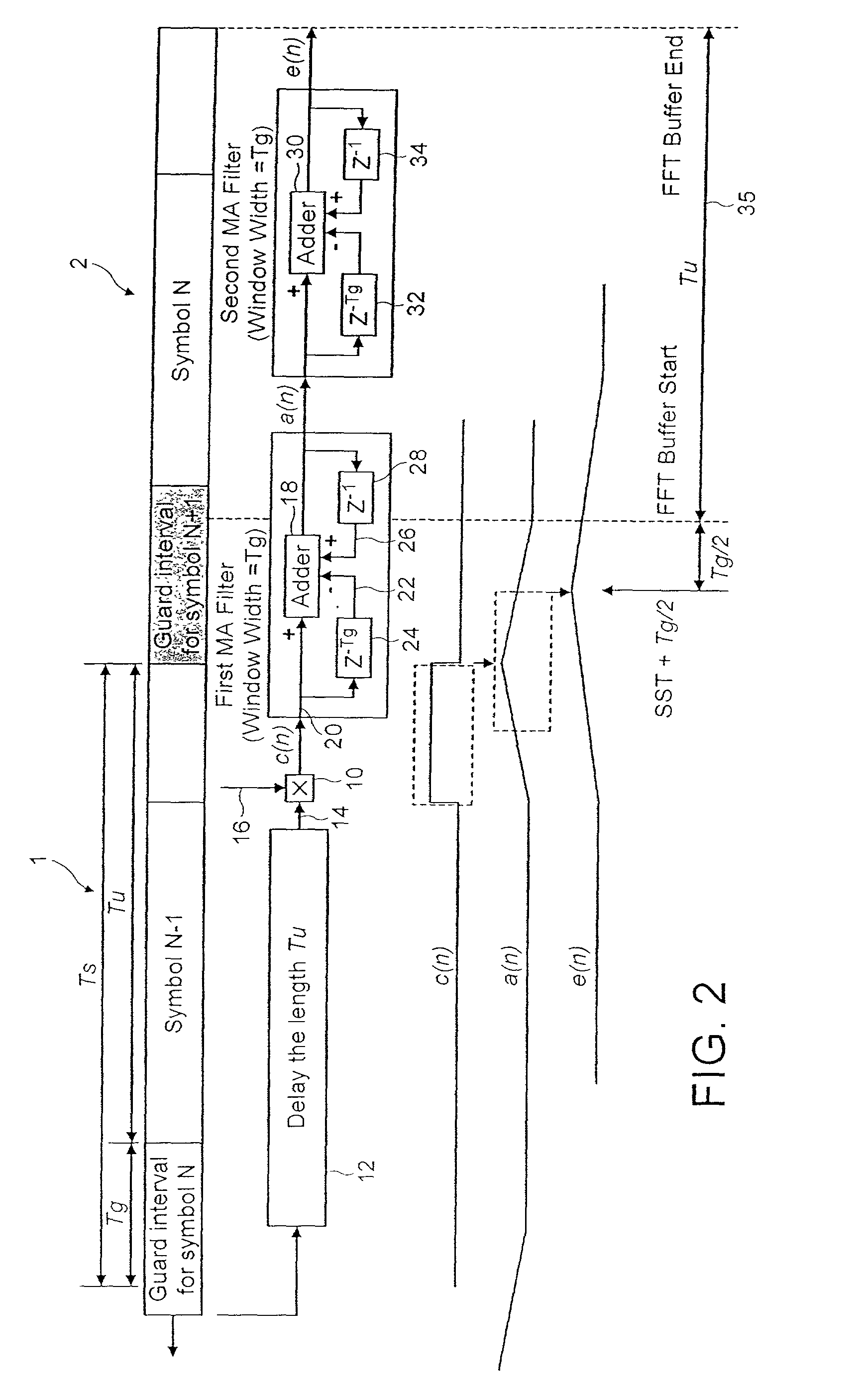Receiver
a receiver and receiver technology, applied in the field of receivers, can solve the problems of data bearing signal samples being corrupted with energy from adjacent signal samples, and achieve the effects of finer estimation of sync position, and improving the estimate of sync position
- Summary
- Abstract
- Description
- Claims
- Application Information
AI Technical Summary
Benefits of technology
Problems solved by technology
Method used
Image
Examples
Embodiment Construction
[0022]An example embodiment of the present invention will now be described with reference to detecting and recovering data from a COFDM symbol produced for example in accordance with the Digital Video Broadcasting (DVB) standard. The DVB standard is disclosed in a publication by the European telecommunications standards institute number EN300744 version 1.1.2 (1997-08) and entitled “Digital Video Broadcasting (DVB); Frame Structure Channel Coding And Modulation For Digital Terrestrial Television”.
[0023]As already explained, a COFDM symbol which is modulated in accordance with DVB standard is generated by modulating K narrow band carriers in parallel with the data to be communicated. Generally as disclosed in the above referenced ETSI publication, the COFDM symbols are formed in the frequency domain and then converted in the time domain using an Inverse Fourier Transform. A diagram representing the form of the COFDM symbols is shown in FIG. 1. In the following description, symbols wh...
PUM
 Login to View More
Login to View More Abstract
Description
Claims
Application Information
 Login to View More
Login to View More - R&D
- Intellectual Property
- Life Sciences
- Materials
- Tech Scout
- Unparalleled Data Quality
- Higher Quality Content
- 60% Fewer Hallucinations
Browse by: Latest US Patents, China's latest patents, Technical Efficacy Thesaurus, Application Domain, Technology Topic, Popular Technical Reports.
© 2025 PatSnap. All rights reserved.Legal|Privacy policy|Modern Slavery Act Transparency Statement|Sitemap|About US| Contact US: help@patsnap.com



